The Versatackle is a self-locking mechanical advantage system with line. It can be used wherever a very tight line, or system with variable tension might be useful: tying out tarps, setting up hammocks, building rope bridges, lashing down equipment etc.
That it is self-locking is enough to recommend it, but it also provides much more mechanical advantage than the trucker’s hitch so can lift heavier things, provided the line is up to it (and you should be more careful when tying out tents and tarps!).
The knot has only two downsides:
- the many wraps is the high friction on the line, so check your lines for signs of premature wear (like flat spots or fraying) when using it.
- the comparatively many turns make it difficult to completely untie compared with similar systems like the Trucker’s Hitch (especially the Quick Trucker’s Hitch) or the Poldo Tackle.
Step 1. Pass the working end through the strong point on the anchor:
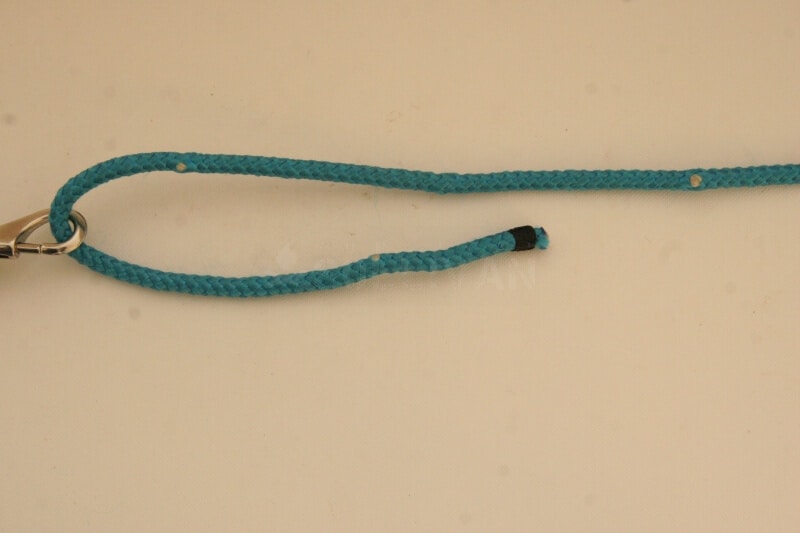
Step 2. Make a loop in the working end. As with the Trucker’s Hitch, any loops can be used here. The Bowline is a good all-purpose end loop, so is pretty standard but anything could work. The other now becomes the working end:
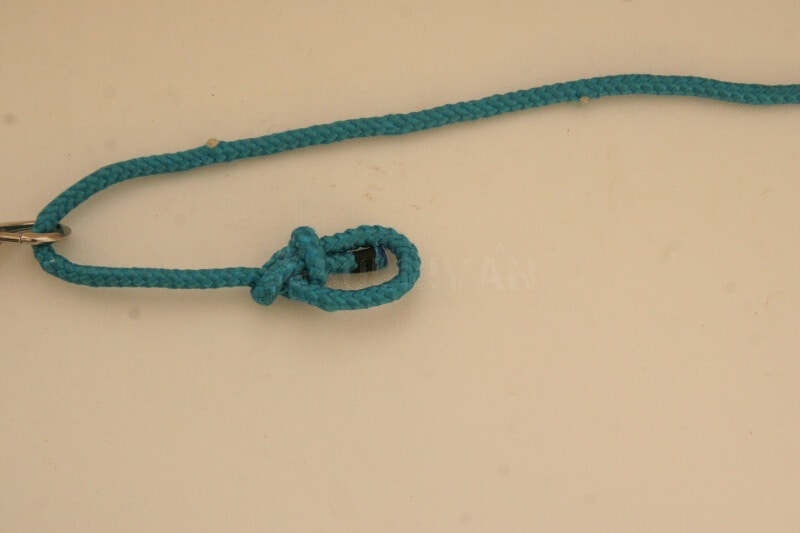
Step 3. Pass the (new) working end through the load:
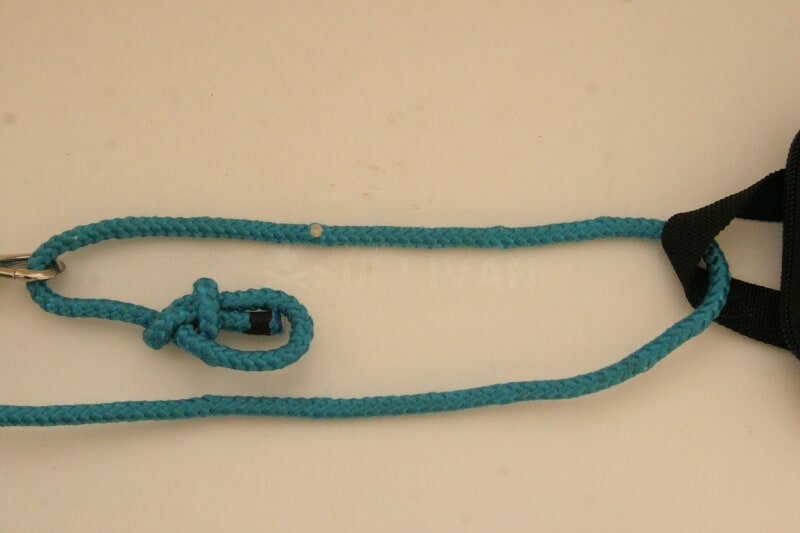
Step 4. Make a mid loop in the working end, just after it passes through the load. The Directional Figure of Eight is perfect for taking load along the line, but again, any mid loop could be used:
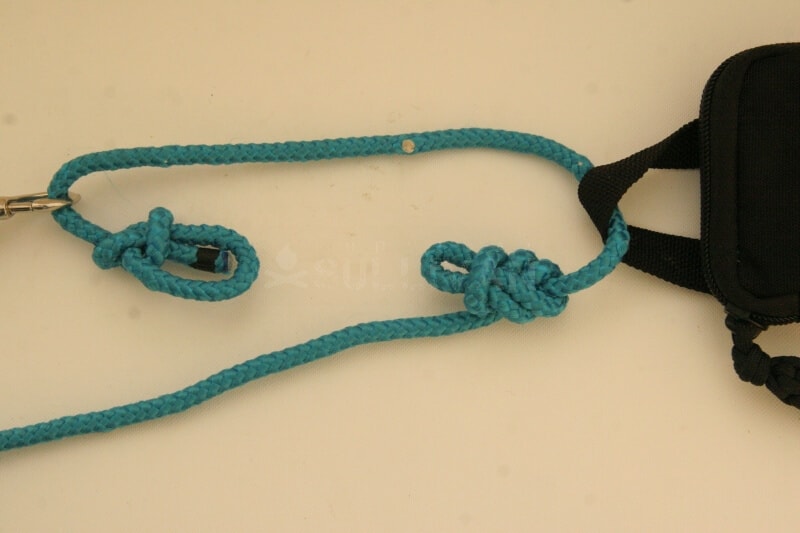
Step 5. Tread the working end through the end loop:
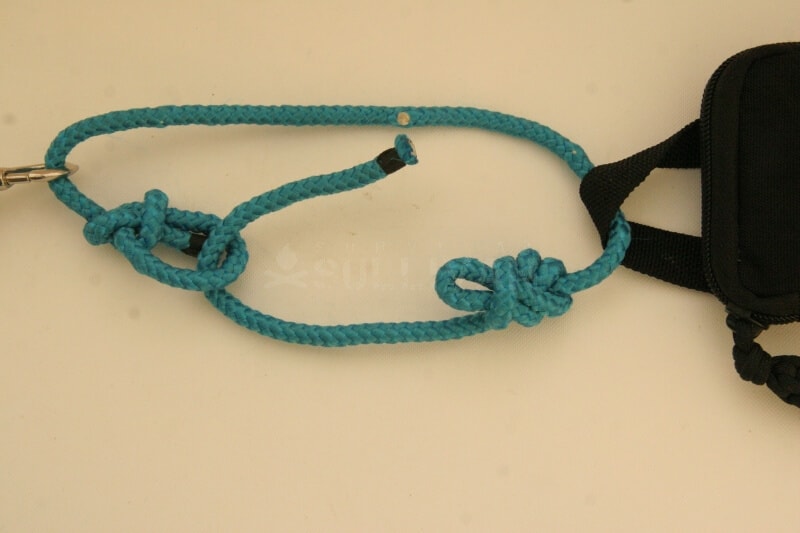
Step 6. Thread the working end through the mid loop:
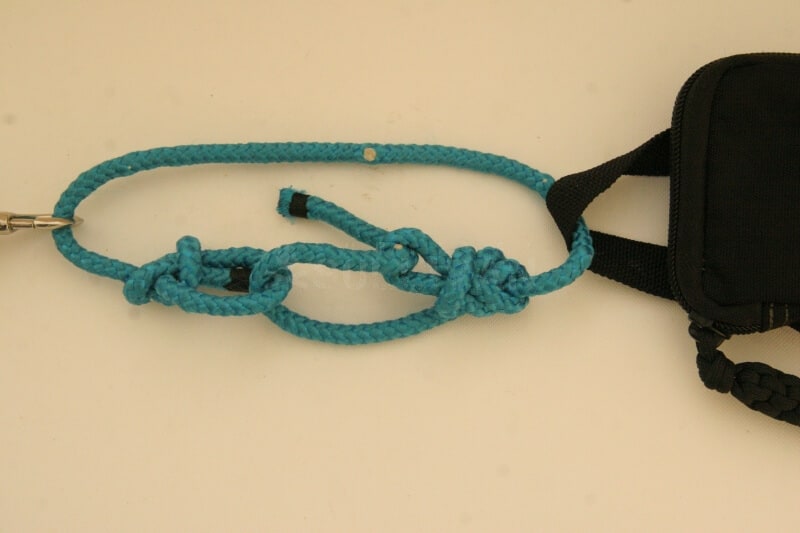
Step 7. Continue passing the working end through around, through both loops, making at least three turns.
Once you have lots of turns, pull them tight. The friction between the turns and he loops should lock the whole system down without the need for extra hitches:
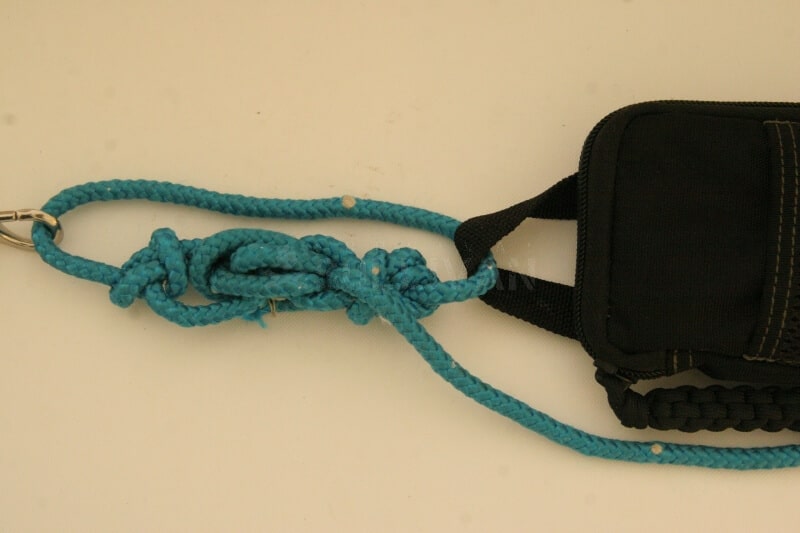
Step 8. Although the system should automatically self-lock, it is good practice to tie off the tail end when finishing a Versatackle. It keeps it out of the way and adds extra security:
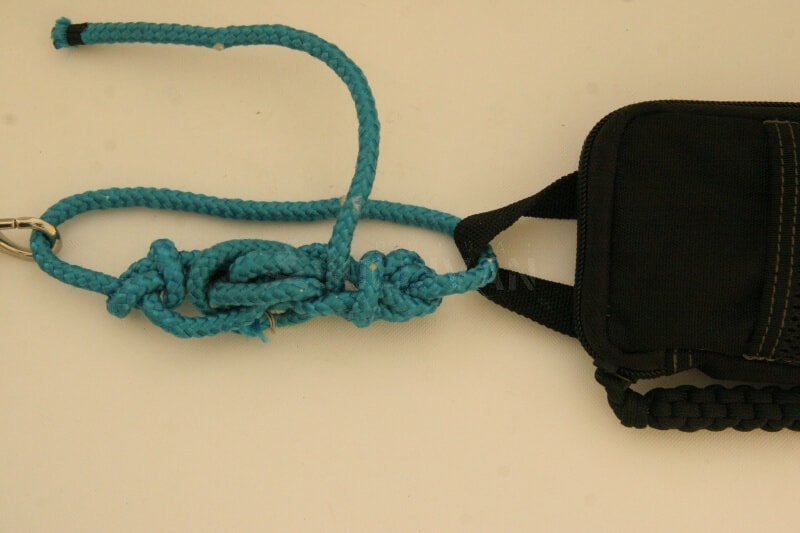
Step 9. Pass the working end underneath all of the turns, making a bight:
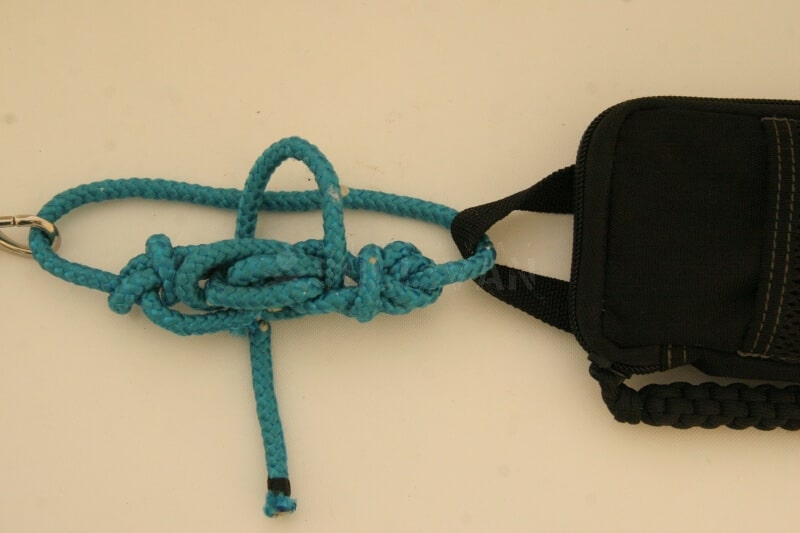
Step 10. Bring the working end back up over the turns on the other side, and thread it through its own bight. Pull it tight, and add more hitches if necessary to tidy up the end (by repeating the last two steps).
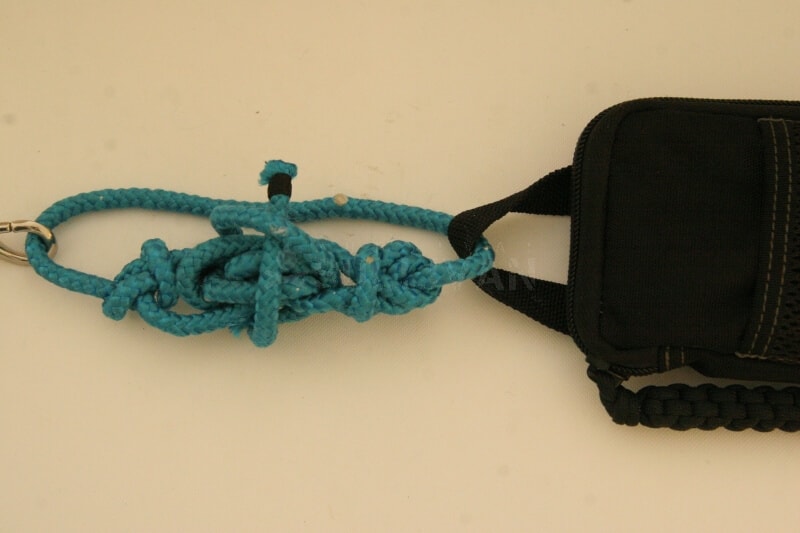
Related Knots
- The Trucker’s Hitch is version of the same principle as the Versatackle, but using only a single pass of the line. This means it has less mechanical advantage, which might be less ‘dangerous’ (so perhaps actually better for guylines, especially for lightweight tarps and tents). It has the downside of not self-locking.
- The Poldo Tackle is an elegant system where both ends come around their respective loads (it is generally used to bring two loads together, rather than a load and a static anchor) and connect to different sides of the same line, producing mechanical advantage.
Conclusion
The Versatackle is the strongest tool in the knot tyer’s box for tension. As such it should be used with care to avoid ripping tents or breaking anchor points!
The author once demonstrated the Versatackle’s strength to a friend by rigging it between the armrests on a train, and the train was close to breaking long before the line was! Check out our knot guide too!
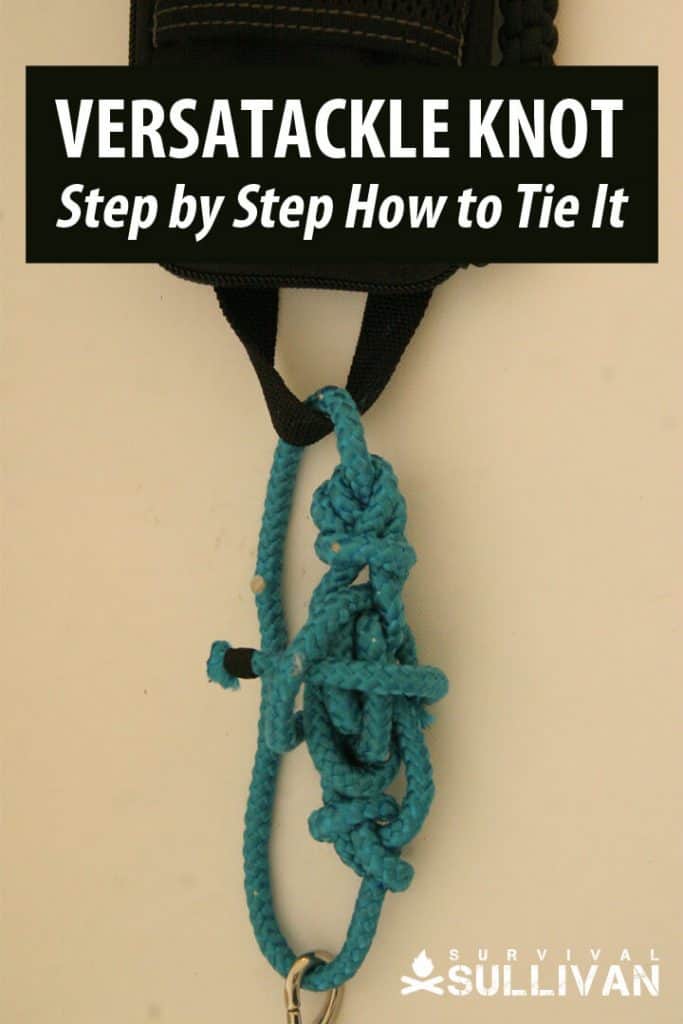
Nick O’Law has been exposed to survival from a very young age. In his teenage years, he learned A LOT about bushcrafting, such as making snares and traps, and even how to make DIY knives.
If you haven’t ye read and tried his knot-making articles on Survival Sullivan, you should definitely check them out.
